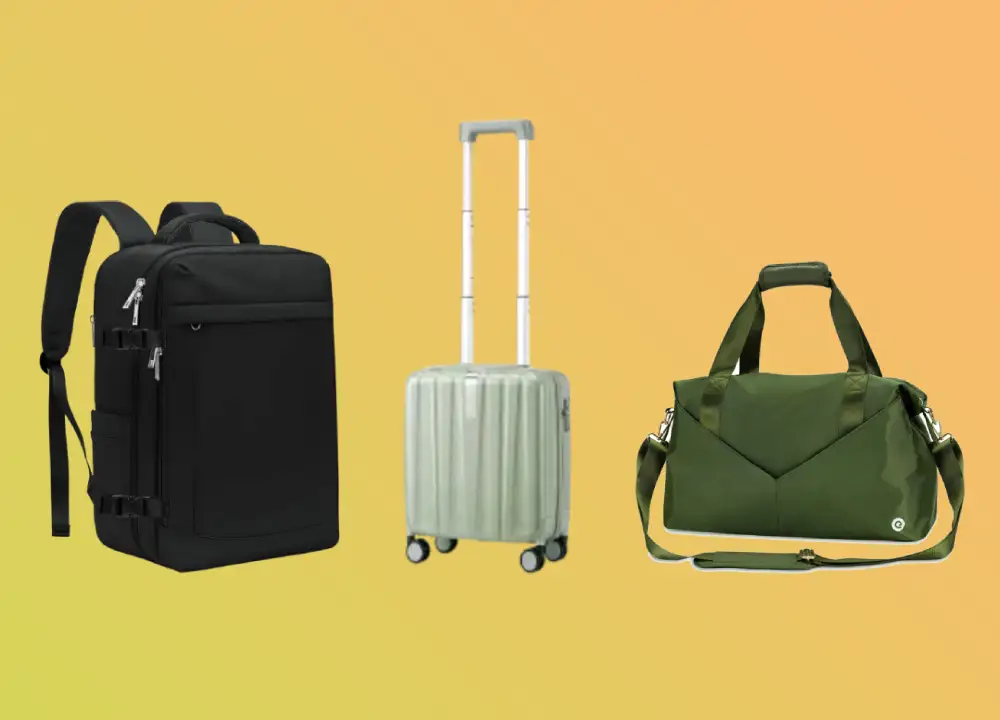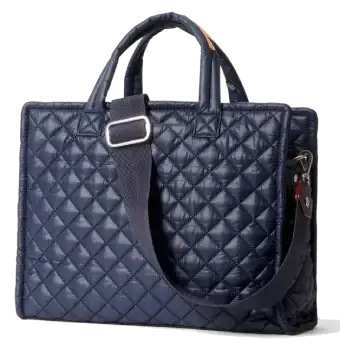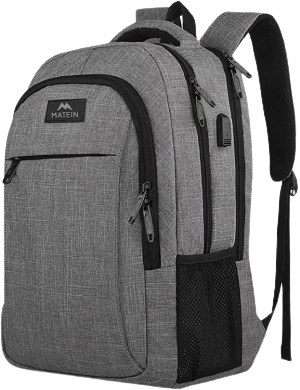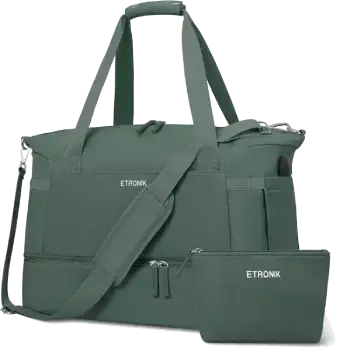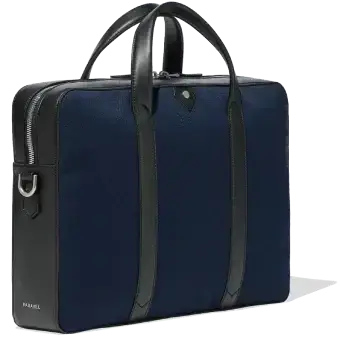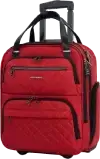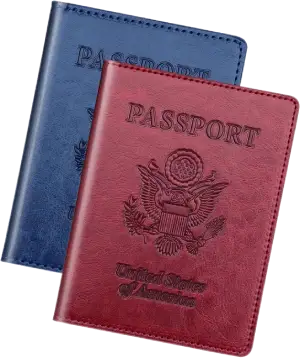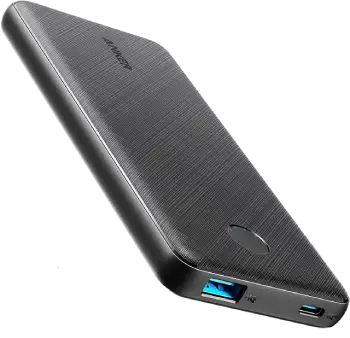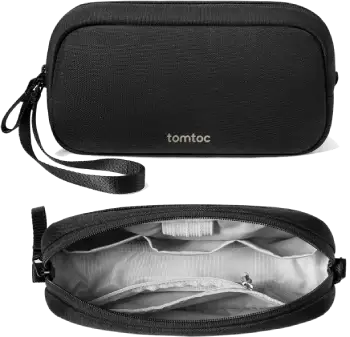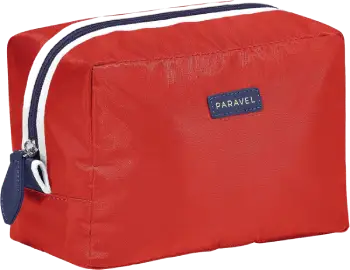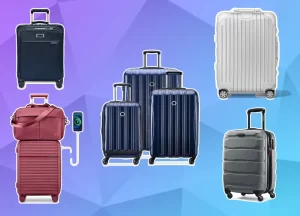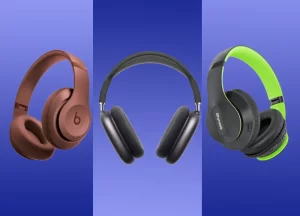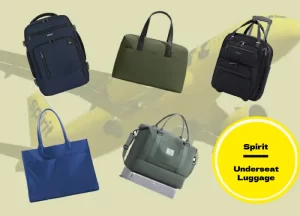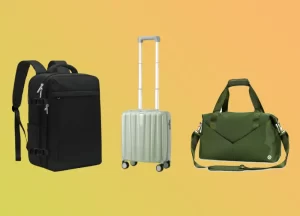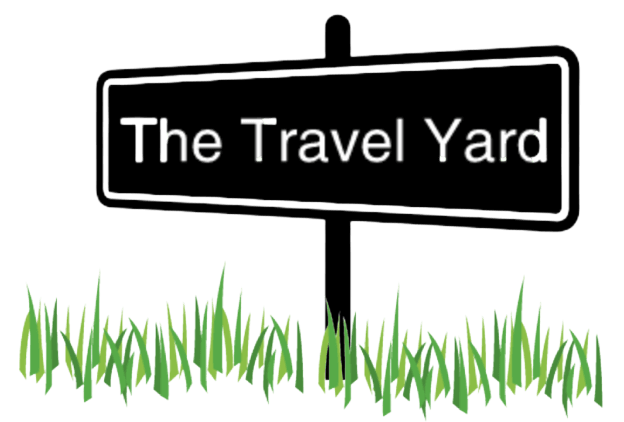So, you’re planning a trip and you’ve come across the term “personal item bag.” But what exactly does it mean? Is it just another carry-on, or is there more to it? And how do you pick the perfect personal item bag for your next adventure? Understanding this essential piece of luggage can make a big difference in how smoothly your travels go. Let’s dive in and help you find the perfect personal item bag that fits both under the seat—and your travel needs!
What Is A Personal Item Bag? The Tiny Travel Companions ✈️
Simply put, a personal item bag is a small bag that airlines allow passengers to bring on a plane in addition to your carry-on suitcase. Think of it as your extra bag for the flight. It’s designed to fit snugly under the seat in front of you, keeping your essentials within easy reach.
You might hear a personal item bag referred to by different names, such as underseat luggage, personal carry-on, hand luggage, or even personal effects. Regardless of the term, the purpose remains the same: it’s the extra bag you can bring along with your carry-on, allowing quick access to important items throughout your journey.
A Brief History
The concept of a personal item became popular in the 1980s when airlines began allowing passengers to bring an additional small bag on board. This was in response to increased carry-on restrictions and the need for passengers to have easy access to important items during flights.
Personal Item Bag vs. Carry-On Bag
While both a personal item and a carry-on bag are allowed on most flights, they serve different purposes. A carry-on bag typically goes in the overhead bin and is larger, while a personal item bag is smaller and designed to stay with you during the flight by fitting under the seat. Understanding this difference is key to ensuring you pack the right items in each bag and avoid any surprises at the airport.
Airline Policies on Personal Item Size
Most airlines specify that a personal item should not exceed dimensions of approximately 18 x 14 x 8 inches (45 x 35 x 20 cm), though exact size restrictions can vary by airline. Unlike carry-on luggage, which is stored in overhead bins, personal items must fit under the seat in front of you.
The introduction of personal items has allowed travelers to keep essential belongings like medications, electronics, and travel documents easily accessible during flights, enhancing the overall travel experience.
| Airline | Underseat Size (Inches) | Underseat Size (Centimeter) |
|---|---|---|
| Air Canada | 17 x 13 x 6 | 43 x 33 x 16 cm |
| Air France | 16 x 12 x 6 | 40 x 30 x 15 cm |
| Alaska Airlines | Not specified. Seat width approximately 17″ | |
| Allegiant Air | 8 x 14 x 18 | 20 x 35 x 45 cm |
| American Airlines | 18 x 14 x 8 | 45 x 35 x 20 cm |
| British Airways | 16 x 12 x 6 | 40 x 30 x 15 cm |
| Delta Air Lines | Items such as: purse, briefcase, small backpack, camera bag, diaper bag, laptop bag | |
| EasyJet | 18 x 14 x 8 | 45 x 36 x 20 cm |
| Frontier Airlines | 18 x 14 x 8 | 45 x 35 x 20 cm |
| Hawaiian Airlines | Items such as: purse, briefcase, laptop computer, small backpack, or similar piece. Most seats are 18 inches wide. | |
| Jet Blue | 17 x 13 x 8 | 43.2 x 33 x 20.32 cm |
| KLM Royal Dutch Airlines | 16 x 12 x 6 | 40 x 30 x 15 cm |
| Lufthansa | 15 x 11 x 3.9 | 40 x 30 x 10 cm |
| Norwegian Airlines | 14.9 x 11.8 x 7.8 | 55 x 40 x 23 cm |
| Qatar | 19 x 14.6 x 8 | 50 x 37 x 25 cm |
| Ryanair | 14 x 8 x 10 | 40 x 20 x 25 cm |
| Southwest Airlines | 18.5 x 8.5 x 13.5 | 47 x 22 x 34 cm |
| Spirit Airlines | 18 x 14 x 8 | 45 x 35 x 20 cm |
| Sun Country Airlines | 17 x 13 x 9 | 43 x 33 x 23 cm |
| United Airlines | 9 x 10 x 17 | 22 x 25 x 43 cm |
Personal Item Bag Types:
Personal item bags cater to a variety of travel styles and needs, from weekend getaways to long-haul journeys. Whether you’re packing light or bringing the essentials, there’s a bag perfect for your trip. Here are some of the most popular types and their unique benefits:
1. Tote Bags: The Classic All-Rounder
- Pros: Spacious, easy to access, quick to pack
- Best for: Everyday essentials, casual travelers
- Features: Open design, often with inner pockets
- Tip: Look for totes with a zip-top closure for added security
The Tote bags open design allows for quick packing and easy access to your belongings. Most totes fit snugly under airplane seats, making them a favorite among frequent flyers.
2. Backpacks: The Hands-Free Hero
- Pros: Hands-free convenience, comfort for longer wear
- Best for: Longer trips, tech-savvy travelers
- Features: Multiple compartments, laptop sleeves, ergonomic straps
- Tip: Choose a backpack with a sternum strap for added comfort during long walks
Modern travel backpacks are a far cry from your old school bag. With dedicated laptop compartments, organizational pockets, and ergonomic designs, they’re perfect for those who want to keep their hands free while navigating busy airports or city streets.
3. Duffel Bags: The Weekender’s Delight
- Pros: Versatile, easy to stuff, flexible
- Best for: Weekend getaways, gym-to-plane transitions
- Features: Soft-sided design, multiple carrying options
- Tip: Look for duffels with a shoe compartment to separate dirty shoes from clean clothes
Compact yet spacious, duffel bags are ideal for short trips or as a gym-to-plane solution. Their soft-sided nature allows for flexible packing, and many come with both handles and shoulder straps for carrying versatility.
4. Briefcases: The Professional’s Choice
- Pros: Organized, sleek, professional appearance
- Best for: Business travelers, document security
- Features: Padded laptop compartments, document organizers
- Tip: Opt for a briefcase with a trolley sleeve to easily attach it to your rolling luggage
For the business traveler, a briefcase offers a professional look while keeping documents, laptops, and work essentials organized and secure. Their slim, structured design often fits perfectly under airplane seats, keeping your work materials within easy reach.
5. Underseat Rolling Bags: The Wheel Deal
- Pros: Easy to maneuver, great for heavier items
- Best for: Travelers with mobility concerns, longer journeys
- Features: Wheels, retractable handles, compact design
- Tip: Ensure the wheels are high-quality and smooth-rolling for easy navigation
These bags offer the convenience of wheels without sacrificing the compact size needed for a personal item. They’re perfect for travelers who prefer not to carry their bags or for those packing heavier items. The compact design fits under most airplane seats, making airport navigation a breeze.
Remember, the best personal item bag for you depends on your travel style, the items you need to carry, and your personal preferences. Consider your most frequent type of travel when choosing, and don’t be afraid to own multiple types for different occasions. Happy travels!
What Can You Pack in a Personal Item Bag?
This is where packing gets both fun and strategic! Your personal item bag should hold the essentials you’ll need during the flight and immediately after landing. Since space is limited, it’s important to prioritize and organize carefully. Here’s a quick rundown of what to pack in your personal item bag:
These essentials will not only help you stay comfortable during the flight but will also keep everything you need most conveniently within reach!
My Personal Experience (and a little advice!)
I once traveled with two bags, what I thought was personal item bags and let me tell you, it was a disaster! The flight attendant made me check one bag in at the gate. This adding extra time and stress to my journey. Since then, I’ve become a firm believer in sticking to the size limits. It saves you headaches and ensures a smoother trip.
How to Choose the Right Personal Item Bag: Key Factors to Consider
With so many options available, selecting the perfect personal item bag can feel overwhelming. Here’s a breakdown of the most important factors to help you make the right choice:
| Key Factor | Why It Matters | Tip |
|---|---|---|
| Size & Shape | Ensures your bag meets airline size restrictions to avoid gate issues. | Opt for a slightly smaller bag rather than one that pushes the limits. Slim designs often fit better under different seat types. |
| Material & Durability | Protect your belongings during travel. Choose bags made from sturdy fabrics. | Look for water-resistant materials to safeguard electronics and important documents from unexpected weather. |
| Organization Features | Keeps your items neatly organized and easily accessible during the flight. | Select bags with compartments, pockets, and straps to secure small items like chargers and toiletries. |
| Comfort | This is essential for carrying your bag around airports and during layovers. | Choose bags with padded shoulder straps or cushioned handles to prevent discomfort, especially with heavier items. |
| Style & Appearance | Reflects your personality and travel vibe. | Consider a design that balances function and fashion, whether it’s a sleek briefcase or a trendy backpack. |
Size Matters: Mastering Personal Item Dimensions and Restrictions
When it comes to personal items, size isn’t just important—it’s everything! Knowing the size guidelines will help you avoid last-minute gate drama regardless of your travel experience or packing for your first flight. Here are the basic size constraints, pro-measuring guidelines, and those challenging airline variances that could ruin or save your packing strategy.
A. Common Size Restrictions Across Airlines
While every airline has its quirks, most follow a similar rule when it comes to personal items: small, compact, and easy to stow under the seat. Here’s what you can generally expect:
- Standard Dimensions: Most airlines stick to the golden rule of 18 x 14 x 8 inches (45 x 35 x 20 cm).
- The Underseat Test: Your personal item must slide under the seat in front of you without a struggle. Picture it as your bag’s cozy nook for the flight.
- Weight Considerations (Sometimes): While many airlines don’t specify weight limits for personal items, some do, often ranging between 15-22 pounds (7-10 kg).
Pro Tip: Always double-check your airline’s policy. You don’t want to arrive at the gate only to find out your bag doesn’t make the cut!
B. How to Measure Your Personal Item Like a Pro
Before you grab your favorite bag, it’s smart to measure it. Here’s how to ensure it fits those tight airline restrictions:
- Length: Measure the longest side of your bag from end to end.
- Width: Check the widest part, which could include handles or side pockets.
- Height: Measure from the bottom to the top of your bag (wheels and all).
Pro Tip: Don’t forget to account for any extra bulk, like protruding zippers, wheels, or straps—airlines certainly won’t overlook these!
C. Airline Exceptions and Variations: What You Need to Know
Just when you think you’ve got it all figured out, some airlines like to throw in a curveball or two. Here are a few common exceptions to watch for:
- Budget Airlines: Carriers like Spirit or Frontier tend to have stricter personal item limits and might even charge for bags outside their guidelines.
- First Class Flexibility: Flying first class? You might get a little more leeway with personal item size or even a second personal item allowance.
- Regional Flights: Smaller planes = smaller space. Be aware that regional flights often have more restrictive under-seat space.
- International Airlines: Carriers outside the U.S. sometimes prioritize weight over size, so check their policies if you’re crossing borders.
Notable Exceptions:
- Southwest Airlines: They’re generous with a 16.25 x 13.5 x 8 inches (41 x 33 x 20 cm) allowance for personal items.
- Spirit Airlines: Famously strict, sticking to 18 x 14 x 8 inches (45 x 35 x 20 cm).
- European Carriers: Often focus on weight rather than dimensions, so be ready to weigh your bag in addition to measuring it.
Final Tips for Stress-Free Packing
Always check your specific airline’s personal item policy before you travel. If you’re unsure, it’s safer to opt for a slightly smaller bag to avoid that dreaded gate check. By staying within the size guidelines, you’ll breeze through your flight with your personal item comfortably under the seat—and your peace of mind intact.
With these size tips in your back pocket, you’re well on your way to becoming a personal item packing pro. Safe travels!
By knowing these exceptions, you can breeze through the gate with zero hassle!
Packing Strategies for Your Personal Item Bag
A. Maximizing Space
 | Roll, Don’t Fold: Rolling clothes instead of folding them not only saves space but also helps reduce wrinkles. |
 | Utilize Every Pocket: Take advantage of all compartments in your bag, using pockets for small items like chargers, toiletries, and snacks. |
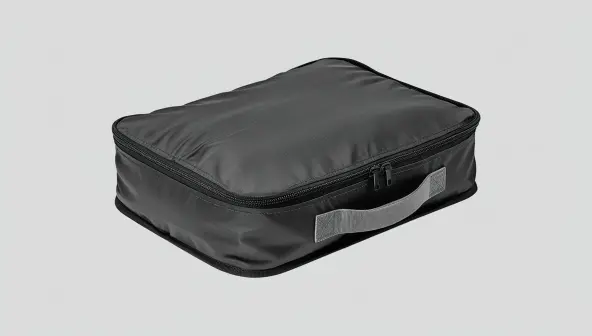 | Compression Bags: Using small compression bags or packing cubes can help you pack more in less space by flattening out bulky items |
B. Organization Tips
 | Keep Essentials Accessible: Always pack the items you’ll need most frequently on top—passport, phone, wallet—so you’re not digging through your bag at inconvenient times. |
 | Use Pouches: Use smaller pouches or zip-lock bags to separate toiletries, electronics, and snacks. This keeps everything in its place and makes items easy to find. |
C. Weight Considerations
 | Pack Light: Stick to essentials. Overloading your personal item can make it cumbersome to carry and uncomfortable to fit under the seat. |
 | Distribute Weight Evenly: Pack heavier items, like a laptop, closer to your back if using a backpack to avoid putting too much strain on your shoulders. |
Personal Items: Advantages and Disadvantages
A. Pros of Using a Personal Item
- Keeping Essentials Within Easy Reach
- Access important items without standing up or opening the overhead bin.
- Ideal for storing snacks, entertainment, and comfort items for the flight.
- Additional Storage Space
- Supplement your carry-on luggage allowance.
- Perfect for items that don’t fit in your main luggage.
- Potential Cost Savings
- Avoid checked baggage fees by maximizing your carry-on allowance.
- Reduce the risk of lost luggage and associated costs.
- Flexibility and Convenience
- Quickly grab what you need during layovers or unexpected delays.
- Ideal for storing items you might need immediately upon arrival.
B. Potential Drawbacks and How to Mitigate Them
- Limited Space
- Drawback: May not fit everything you want to bring.
- Mitigation: Practice efficient packing techniques and prioritize essentials.
- Can Be Cumbersome to Carry
- Drawback: An extra bag to manage while navigating the airport.
- Mitigation: Choose a comfortable, ergonomic bag design or one that attaches to your main luggage.
- Risk of Overpacking
- Drawback: Temptation to bring unnecessary items.
- Mitigation: Create a packing list and stick to it, focusing on multi-use items.
- Potential for Airline Scrutiny
- Drawback: Some airlines may be strict about personal item sizes.
- Mitigation: Always adhere to airline guidelines and be prepared to check your bag if necessary.
By understanding these strategies, avoiding common mistakes, and weighing the pros and cons, you can master the art of traveling with a personal item. Remember, the key is to pack smart, stay organized, and always be prepared for the unexpected. Happy travels!
Frequently Asked Questions (FAQs):
- Can I bring both a carry-on and a personal item bag? Yes, most airlines allow you to bring both a carry-on and a personal item. The carry-on is usually stored in the overhead bin, while the personal item should fit under the seat in front of you.
- Is there a weight limit for personal items? Typically, airlines don’t impose strict weight limits for personal items, though some international carriers may have restrictions. It’s always a good idea to check with your airline to confirm their specific rules.
- Can I bring a laptop in my personal item bag? Yes, you can pack a laptop in your personal item. Many travelers use bags like backpacks, briefcases, or totes that are designed to carry laptops and other essentials.
- Can I bring a camera bag as a personal item? Yes, a camera bag can count as your personal item, as long as it meets the airline’s size limits for personal items, which are generally around 18 x 14 x 8 inches.
- Can I Take 2 Personal Items Bags Instead of One Carry-On Bag? This depends on your airline and ticket type. If your fare includes both a carry-on and a personal item, you can usually take two personal items instead of the carry-on, as long as they meet the size requirements. If your ticket only includes a personal item, trying to bring two bags could result in additional charges or the need to check one of them. Always check with your airline for the latest baggage policies to avoid any issues during your trip.
Wrapping it Up: Your Personal Item Bag Adventure Awaits!
Choosing the right personal item bag can make all the difference in your travel experience. By understanding the size restrictions, choosing the right style, and packing strategically, you can enjoy a stress-free journey. Remember to always check your airline’s specific baggage policy before you go!
Happy travels! ✈️🧳
Sources
Von Baer – Carry-on vs Personal Item 2024: Key Differences You Need To Know
American Airlines – Carry-on Bags
Frontier Airlines – What are the sizes and weight limits for bags?
Simple Flying – What Size Bag Fits Under An Airplane Seat?
Related Reading
Underseat Luggage Size Chart for Major Airlines [Dimensions, Sizes & More] 2024
The Ultimate Guide to Selecting and Packing Your Underseat Carry-On Bag (Personal Item)
12 Best Spirit Underseat Bags: Pack Smart, Pay Less
3 Best Frontier Airlines Under Seat Bag With Wheels
Carry On Luggage Size: What You Need to Know Before You Fly
23 Best Stylish Underseat Bags for Women
The Best International Underseat Luggage For Beating Airline Baggage Charges
Underseat Bag With the Best Laptop Compartment
